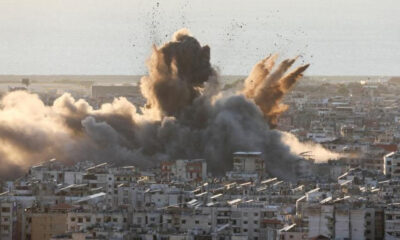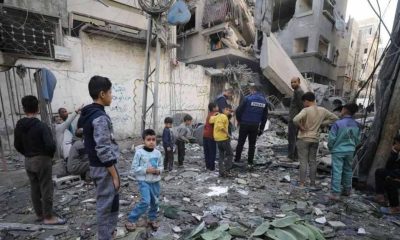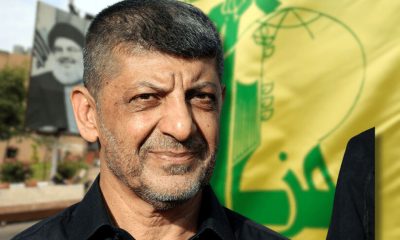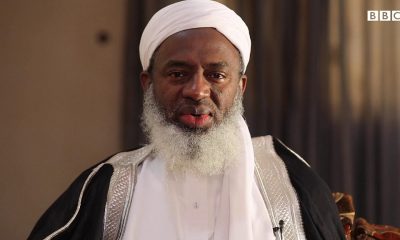International
UN lists Israeli military among violators of children’s rights
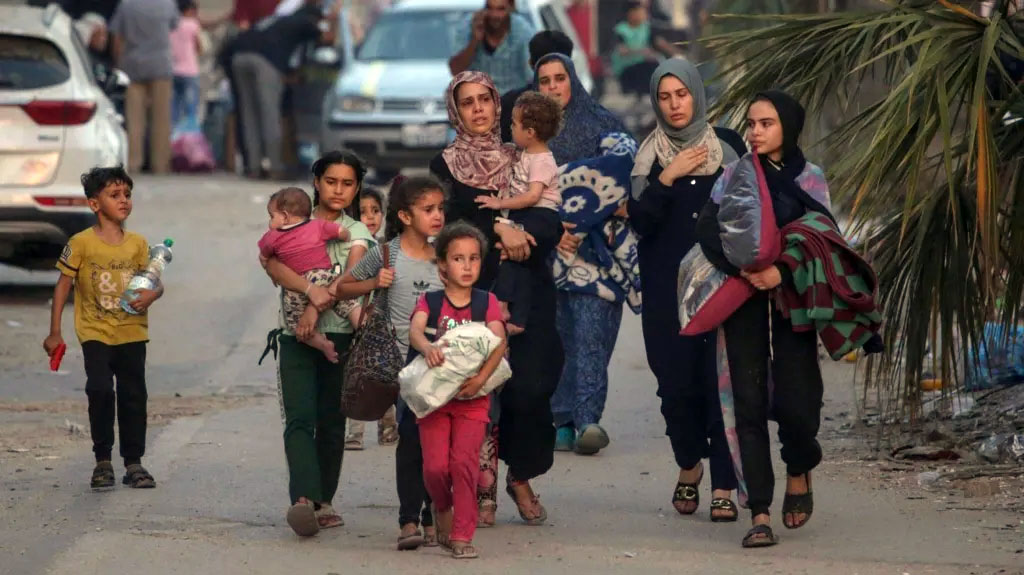
UN lists Israeli military among violators of children’s rights
The UN has added the Israeli military to a list of offenders failing to protect children last year, Israel’s ambassador to the UN says.
Gilad Erdan, who said he had been notified of the decision on Friday, described the decision as “shameful”. Foreign Minister Israel Katz said it would “have consequences for Israel’s relations with the UN”.
A spokesman for the Palestinian president told the Reuters news agency the decision was a step closer to holding Israel accountable for what he called its crimes.
Thousands of children have been killed in Israel’s campaign against Hamas in Gaza, and thousands more are in desperate need of humanitarian assistance.
The annual list by the secretary general covers the killing of children in conflict and denial of access to aid and targeting of schools and hospitals. It will be included in a report to be presented to the UN Security Council next week.
It was not immediately clear which violations the Israeli army is accused of committing.
Hamas and Palestinian Islamic Jihad will also be included in the list, reports said.
Prime Minister Benjamin Netanyahu said the UN had added itself to the “blacklist of history” and that the Israeli military was the “most moral army in the world”.
Israel launched its offensive after Hamas attacked communities near Gaza on 7 October last year, killing about 1,200 people including 38 children and taking 252 hostages including 42 children, according to Israel’s National Council for the Child.
The Hamas-run health ministry in Gaza says 36,731 people have since been killed by Israeli bombardment and ground attacks.
Last month, the UN said at least 7,797 children had been killed during the war based on data relating to identified bodies provided by the Hamas-run health ministry in Gaza.
READ ALSO:
- 2026 W’Cup: Super Eagles walk tight rope, play 1-1 with South Africa in Uyo
- Sanwo-Olu opens SDGs multi-storey Sickle Cell Centre at LASUTH
- Chery lights up Lagos Motor Fair with Tiggo 8 Pro launch
Also last month, the UN revised down the proportion of reported fatalities that were women and children from 69% to 52% of the total number of deaths.
Israel said the reduction showed the UN had relied on false data from Hamas. The UN says it is now relying on figures from the Hamas-run health ministry in Gaza rather than from the Hamas-run Government Media Office (GMO). The GMO meanwhile says Israeli attacks have killed more than 15,000 children.
On Friday, the Associated Press news agency said its analysis of Gaza’s health ministry data found that the proportion of Palestinian women and children being killed in the Israel-Hamas war appeared to have declined sharply.
It quoted an expert at the US non-profit research group CNA as saying this was linked to reduced intensity of Israeli air strikes.
However Israeli air strikes on Gaza have continued. On Thursday morning an air strike reportedly killed at least 35 people at a central Gaza school packed with displaced people. The US said it had seen reports that 14 children were killed in the strike. Israel has named 17 Hamas and Palestinian Islamic Jihad members it says the strike killed.
In the strike’s aftermath, medics from Doctors Without Borders (MSF) which is supporting the nearby al-Aqsa Martyrs’ hospital described chaotic scenes there. The organisation said that in the previous 24 hours, at least 70 dead people had been brought in, and more than 300 wounded, mostly women and children.
READ ALSO:
- Woman bags 25 years imprisonment for hiring hitmen to kill her husband
- Police nabs 18-year-old for stealing LED lights on third mainland bridge
- BREAKING: FG increases minimum wage offer to ₦62,000
Last month an Israeli missile last month set fire to a camp for displaced Palestinians near the southern city of Rafah, reportedly killing 45 people including many children and sparking global outrage. The Israeli military said it had not expected such a fire to break out.
Israel has also been accused of delaying the entry of much-needed aid into Gaza, depriving those living on the Palestinian territory of clean water, food, medicines as well as fuel. It denies the accusation and accuses UN bodies and humanitarian organisations of failing to distribute aid that is allowed in.
The US-based famine early warning system network Fews Net says it is “possible, if not likely” that famine was happening in northern Gaza in April and an Israeli military operation in Rafah in southern Gaza was worsening food insecurity there.
That operation has displaced more than a million Palestinians from Rafah, where they had sought refuge from fighting elsewhere in Gaza, and to sandy coastal areas or the city of Khan Younis, which is largely in ruins.
The UN agency for Palestinian refugees Unrwa says the movement of such a large number of people in such a short timeframe alongside a sharp fall in aid deliveries is having deadly consequences.
“Children are dying due to malnutrition and dehydration,” Unrwa spokeswoman Juliette Touma said.
UN lists Israeli military among violators of children’s rights
BBC
International
Relief as Israel agrees to ceasefire with Lebanon
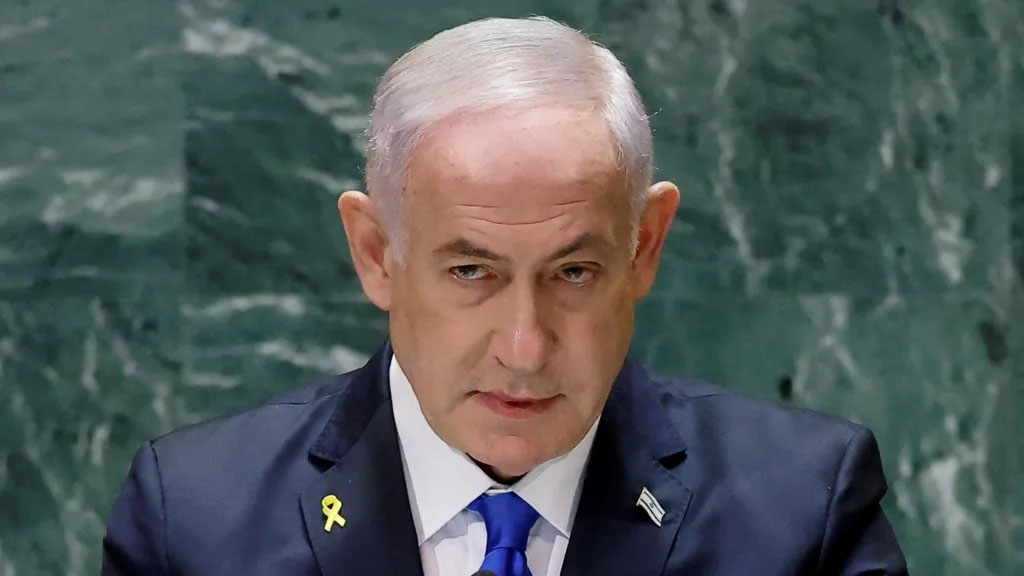
Relief as Israel agrees to ceasefire with Lebanon
Israeli Prime Minister Benjamin Netanyahu has said he will bring a US-brokered proposal for a ceasefire with Hezbollah in Lebanon to his government for approval as soon as Tuesday evening.
He said in a televised address that he would put “a ceasefire outline” to ministers “this evening”.
He however did not say how long the truce would last, noting “the length of the ceasefire depends on what happens in Lebanon”.
But it later learnt that the ceasefire would is for 60 days.
During the period, Hezbollah fighters are expected to retreat 40 kilometres from Israel’s border, with Israeli ground forces withdrawing from Lebanese territory.
“If Hezbollah violates the agreement and attempts to rearm, we will strike,” Netanyahu warned.
Key Israel backer the United States has led ceasefire efforts for Lebanon alongside France.
US President Joe Biden is optimistic the deal will lead to a “permanent cessation of hostilities”.
Biden added that the US would lead another push for a ceasefire in Gaza.
“In full coordination with the United States, we are maintaining full military freedom of action,” Netanyahu said, outlining the seven-front war Israel says it faces in Gaza, the occupied West Bank, Yemen, Iraq, Syria, Lebanon and Iran.
Even as Netanyahu spoke about the ceasefire, the Israeli military carried out multiple strikes on heart of Beirut while the army said some 15 projectiles had entered Israeli airspace from Lebanon.
Demonstrators raise placards and Israeli flags during a protest in front of the Israeli Defence Ministry in the coastal city Tel Aviv on November 26, 2024, against a possible ceasefire with Hezbollah in Lebanon. – Israel’s security cabinet has started discussing a proposed ceasefire deal in its war with Hezbollah in Lebanon, an Israeli official confirmed to AFP on November 26. (Photo by Jack GUEZ / AFP)
The war in Lebanon escalated after nearly a year of limited cross-border exchanges of fire begun by Hezbollah, which said it was acting in support of Hamas after its October 7, 2023 attack on Israel, which sparked the war in Gaza.
The war has killed at least 3,823 people in Lebanon since October 2023, according to the health ministry, most of them since September.
On the Israeli side, the hostilities have killed at least 82 soldiers and 47 civilians, authorities say.
Netanyahu said the ceasefire would allow Israel to focus on “the Iranian threat” and ramp up its fight against Hamas in Gaza.
“With Hezbollah out of the picture, Hamas is left on its own,” he said.
“We will increase our pressure on Hamas and that will help us in our sacred mission of releasing our hostages.”
During last year’s Hamas attack, militants took 251 hostages, of whom 97 are still held in Gaza, including 34 the army has declared dead.
International
Israeli strikes pound central Beirut, suburbs

Israeli strikes pound central Beirut, suburbs
BEIRUT: Israeli strikes pounded a densely-populated part of the Lebanese capital and its southern suburbs on Tuesday, hours ahead of an anticipated announcement of a ceasefire ending hostilities between Israel and Lebanese armed group Hezbollah.
A strike on Beirut hit the Noueiri district with no evacuation warning and killed at least one person, Lebanon’s health ministry said in a preliminary toll.
READ ALSO:
- French football star, Paul Pogba’s blackmail trial begin in Paris
- French football star, Paul Pogba’s blackmail trial begin in Paris
- Vigilante arrested in Anambra for robbery
Minutes later, at least 10 Israeli strikes hit Beirut’s southern suburbs. They began approximately 30 minutes after the Israeli military issued evacuation orders for 20 locations in the area, the largest such warning yet.
As the strikes were under way, Israel’s military spokesperson Avichay Adraee said the air force was conducting a “widespread attack” on Hezbollah targets across the city.
Israeli strikes pound central Beirut, suburbs
ARAB NEWS
International
Over $100m wasted, Trump mocks Democrats for targeting him

Over $100m wasted, Trump mocks Democrats for targeting him
Former U.S. President Donald Trump has fiercely criticised the legal cases brought against him, calling them “empty and lawless”.
He accused Democrats of weaponising the judicial system to target him as a political opponent.
In a strongly worded statement, Trump alleged that over $100 million in taxpayer money had been wasted in what he described as a politically driven effort to undermine his influence.
“Nothing like this has ever happened in our Country before,” he said, pointing to high-profile prosecutors, including Georgia’s Fani Willis and New York Attorney General Letitia James, as key figures in what he called a “political hijacking.”
READ ALSO:
- PH refinery: 200 trucks will load petroleum products daily, says Presidency
- US-based Nigerians get 30-year sentence over $3.5m romance scam
- 4 Nigerians arrested in Libya for alleged drug trafficking, infection charges
Trump also accused Willis of colluding with Nathan Wade, whom he described as “her lover” and lacking the experience to handle such cases.
He claimed Wade was paid “millions,” allegedly enabling lavish trips and cruises.
Letitia James, who is pursuing a civil fraud case against Trump, was also criticised.
He claimed she had campaigned on a promise to “get Trump” in her bid for office, an action he labelled “unethical” and “probably illegal.”
Trump also mentioned Manhattan District Attorney Alvin Bragg, alleging that Bragg initially resisted prosecuting him but was pressured into action by the Justice Department and the Democratic Party.
Describing the series of legal actions as a “low point in the history of our Country,” Trump maintained his resolve, declaring: “I persevered, against all odds, and WON.”
Over $100m wasted, Trump mocks Democrats for targeting him
-

 metro22 hours ago
metro22 hours agoBREAKING: Port Harcourt refinery begins operation
-

 Business3 days ago
Business3 days agoJust in: Dangote refinery reduces petrol price for marketers
-

 metro2 days ago
metro2 days ago40-foot container falls on car in Lagos
-

 Politics3 days ago
Politics3 days ago2027: Lagos Speaker, Obasa joins gov race, may battle Seyi Tinubu, others
-

 Politics2 days ago
Politics2 days agoLagos 2027: Seyi Tinubu campaign team releases his life documentary
-

 International2 days ago
International2 days agoTrump to sack 15,000 transgender officers from U.S. military: Report
-

 Entertainment2 days ago
Entertainment2 days agoPolygamy best form of marriage for Africa – Okey Bakassi
-

 Education15 hours ago
Education15 hours agoUS University opens 2025 scholarships for international students

